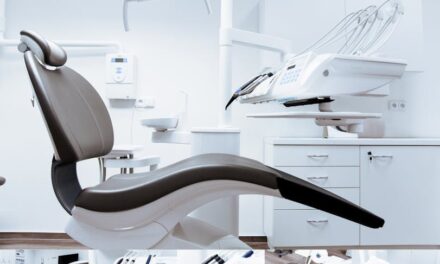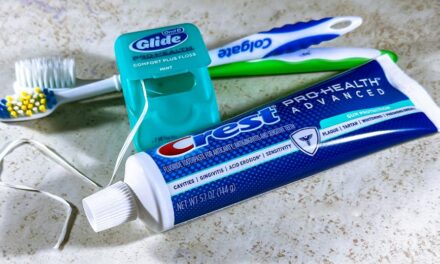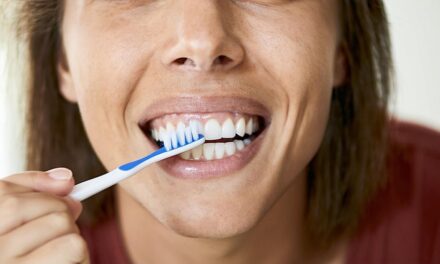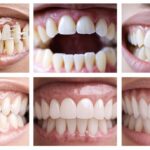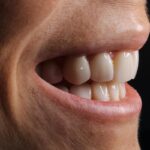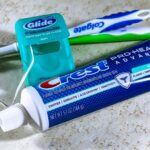What is PAOO?
Periodontally Accelerated Osteogenic Orthodontics (PAOO) is an innovative approach that combines periodontics, orthodontics, and surgical techniques to significantly accelerate tooth alignment. By modifying the biological responses of the tissues surrounding the teeth, PAOO reduces orthodontic treatment time and enhances patient comfort.
The foundation of PAOO lies in the Regional Acceleratory Phenomenon (RAP), which results in accelerated bone remodeling and tooth movement at the molecular level. Surgeons use minimally invasive techniques involving small cuts in the jawbone surrounding misaligned teeth. Introduced in the early 2000s, PAOO has significantly reduced treatment durations from years to as little as six to nine months in some cases.
During PAOO treatment, dentists and orthodontists utilize a combined approach to address bone regeneration. The procedure involves controlled surgical osteotomies that create a state of low-density bone around teeth targeted for strategic movement. Supplements with demineralized freeze-dried bone allograft (DFDBA) and bioengineered materials like Bio-Oss® help enhance bone volume, providing an improved structural basis for faster tooth movement. The operation is typically performed under intravenous sedation, resulting in lower morbidity and avoiding lengthy hospital stays.
PAOO offers enticing benefits beyond reducing treatment intervals, including:
- Improved gum health
- Enhanced bone structure
- Overall dental stability
- Long-lasting results
The technique effectively addresses various cases, including overcrowding, malocclusions, and skeletal discrepancies, within significantly reduced treatment windows and with superior patient comfort measures.
Despite the use of advanced operative aids and regenerative materials, PAOO compares favorably to conventional alternatives for severe orthodontic conditions requiring aggressive correction strategies. The upfront costs are offset by savings over traditional methods that require prolonged sessions, extended appliance wear, or additional surgical procedures.
As practitioners continue to investigate PAOO’s short and long-term efficacies and potential, its broader application may influence future practice norms in the well-established field of essential dental correction, reshaping perceptions of treatment duration and overall outcomes.
Benefits and Innovations of PAOO
PAOO not only shortens the timeline for orthodontic alignment but also fundamentally improves the patient’s experience through less invasive management of dental corrections. The technique’s precision allows for focused treatments that boost overall efficiency, reducing the need for extractions and minimizing surgical footprint. This substantially enhances patient comfort and engagement.
PAOO incorporates enriching technological and procedural advancements. The use of bioabsorbable materials, which safely integrate into the body, promotes robust and reliable bone regeneration processes. These materials foster rapid orthodontic movement and ensure long-term stability of the dental structures post-treatment. The personalized nature of PAOO reflects a convergence of advanced imaging technologies with cutting-edge clinical techniques, ensuring precision and optimizing outcome predictability.
One notable innovation within the PAOO protocol is the use of laser-enhanced corticotomies. This precise ablation method minimizes trauma and optimally prepares the bone for regenerative processes involved in swift orthodontic adjustments. Lasers offer a clean, controlled method for conducting necessary osteotomies, which, coupled with their inherent sterilizing capabilities, significantly reduce the risk of infection.
Throughout the PAOO treatment, continuous monitoring and adjustment are streamlined through digital technologies. Advanced imaging techniques such as cone beam computed tomography (CBCT) provide unparalleled clarity and detail of the craniofacial structures, enabling customized planning and monitoring1. These technological advancements refine procedural accuracy and instill a heightened sense of assurance among patients and providers regarding expected treatment outcomes.
PAOO represents a synergy of accelerated orthodontics enhanced by biological understanding, technological innovation, and patient-centered practicality. Its continued development and increased implementation may set a new benchmark in orthodontics, emphasizing efficiency and efficacy in equal measure. This promising paradigm shift aims to elevate clinical standards and significantly enrich patient experiences and satisfaction, ultimately reflecting an overall enhancement in the quality of orthodontic care.
Cost Analysis of PAOO
PAOO introduces a complex but compelling cost structure compared to traditional orthodontic methods. Advanced materials, sophisticated imaging, and specialized surgical procedures inherently drive initial costs higher. However, when considering the holistic economic impact, PAOO can offer significant cost-effectiveness over the long term.
Initial costs for PAOO typically encompass:
- Consultation fees
- Imaging tests like CBCT scans
- Surgical interventions
- Orthodontic adjustments
- Follow-up care
The expense of bioabsorbable materials and the utilization of state-of-the-art technology also contribute to the greater upfront cost. However, the rapid pace of treatment significantly reduces the total number of visits and adjustments needed, which curtails the long-term financial commitment and often outweighs the premium start-up costs.
Insurance coverage for PAOO varies widely among providers and plans. Some consider it a specialty treatment and only partially cover the costs, while others may view it as an elective aesthetic procedure and provide minimal or no coverage. It’s crucial for patients to discuss coverage specifics with their insurance companies and dental care providers, as this can substantially alleviate the financial burden.
Out-of-pocket expenses are more predictable once insurance variables are assessed. Many dental clinics offer structured payment plans or credit services that allow spreading out the expense over the treatment period or beyond. Additional cost relief options may include medical credit lines with promotional interest rates or flexible spending accounts (FSAs) which use pre-tax dollars to pay for eligible dental expenses2.
PAOO’s approach to minimizing hidden costs associated with extended treatment durations typical of conventional methods propels it into a favorable economic position. The swifter resolution of orthodontic issues reduces inconveniences, resulting in fewer productivity losses and a faster return to daily activities without ongoing dental disruptions.
Moreover, the enhanced precision and predictability achieved by detailed imaging and customized surgical interventions result in a high success rate, lowering the likelihood of future corrective procedures or revisits, which are often not covered by insurance and can contribute significantly to long-term costs. While PAOO may appear costlier upfront, its aggregate fiscal benefits, enhanced quality of life during treatment, diminished risk of prolonged issues, and less frequent dental visits establish its niche as a cost-viable alternative in thoughtful economic evaluations.
Case Studies and Clinical Outcomes of PAOO
Real-world applications and outcomes of PAOO provide valuable insights into the effective practicality and possible limitations of this orthodontic advancement. Across various clinical settings, PAOO has been applied successfully, substantially expediting patients’ orthodontic treatment, reducing treatment times, and improving patient comfort.
In one notable case, a 24-year-old patient with severe dental crowding and malocclusion underwent PAOO treatment. The employment of PAOO shortened the projected 24-month treatment period to just 11 months. Post-treatment assessment showed excellent stability in dental alignment and bone structure, with negligible root resorption3. The quick turnaround spared the patient from prolonged discomfort and interruption to daily life, illustrating the practical benefits of integrating advanced PAOO methodologies over more traditional approaches.
Another case study focused on a group of adolescents undergoing orthodontic treatment for various malocclusions. Using PAOO, the average treatment duration was reported to be cut by half. The study also recorded significantly improved bone density at treatment sites, offering faster anchorage for orthodontic movements and decreasing the total intervention phase4. Recurrent feedback from these cases consistently praised reduced pain, mainly attributed to fewer orthodontic adjustments and office visits compared to traditional braces.
While PAOO presents promising improvements in orthodontic practices, it does have limitations and considerations. Critics and some clinical reviews suggest conditions under which PAOO may not be optimal, particularly in cases of already compromised periodontal health, where accelerated movement may exacerbate conditions like gum recession or lead to unpredictable tooth movements due to varied individual responses to the surgical stimulus. Complications linked to inadequate protocols or surgical inaccuracies were also recorded, emphasizing the necessity for stringent training and precision during implementation.
A comprehensive review maintained that while PAOO significantly benefits specific cases requiring fast alignment due to employment or educational demands, it remains crucial to establish candid planning with patients about potential unforeseen developments that could extend beyond predicted treatment scenarios5.
Continued research and observational studies into PAOO shed light on both its efficacious application in perfecting smiles in significantly reduced times and its fragility in handling cases that fall outside a very defined set of parameters. Ongoing adaptation of PAOO procedures promises to extend its utility and reliability in dealing with broader and more challenging orthodontic conditions regularly encountered in clinical settings.
The dynamic interplay of apparent benefits against logically grounded constraints offers a vibrant tableau of PAOO, beckoning a future where orthodontic resolutions are both swift and attuned to the biology underlying human oral architecture. Through diligent refinement and clinical validation, PAOO will continue its trajectory to becoming a cornerstone technique in modern orthodontics, customizing faster, less intrusive corrective experiences for patients globally.
- Scarfe WC, Azevedo B, Toghyani S, Farman AG. Cone Beam Computed Tomographic imaging in orthodontics. Aust Dent J. 2017;62 Suppl 1:33-50.
- Wiedel AP, Bondemark L. Fixed versus removable orthodontic appliances to correct anterior crossbite in the mixed dentition–a randomized controlled trial. Eur J Orthod. 2015;37(2):123-127.
- Wilcko WM, Wilcko T, Bouquot JE, Ferguson DJ. Rapid orthodontics with alveolar reshaping: two case reports of decrowding. Int J Periodontics Restorative Dent. 2001;21(1):9-19.
- Amit G, Jps K, Pankaj B, Suchinder S, Parul B. Periodontally accelerated osteogenic orthodontics (PAOO) – a review. J Clin Exp Dent. 2012;4(5):e292-e296.
- Mathews DP, Kokich VG. Accelerating tooth movement: the case against corticotomy-induced orthodontics. Am J Orthod Dentofacial Orthop. 2013;144(1):5-13.


